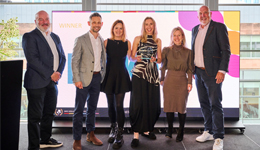TED fellow Jinha Lee has been working on the SpaceTop 3D desktop in collaboration with Microsoft. Allowing people to interact with machines in the same way they do with solid objects could make computing much more intuitive, he told the BBC.
He can see the system coming into general use within a decade. The system consists of a transparent LED display with built-in cameras, which track the user's gestures and eye movements. The design was inspired by what he sees as a human need to interact with things.
"Spatial memory, where the body intuitively remembers where things are, is a very human skill," he said. Translating this to the digital world will enable people to use computers more easily as well as complete more complex tasks. "If you are working on a document you can pick it up and flip through it like a book," he told the BBC.
For more precise tasks, where hand gestures are not accurate, there is a touchpad. It will allow, for example architects to manipulate 3D models.
"The gap between what the designer thinks and what the computer can do is huge. If you can put your hands inside the computer and handle digital content you can express ideas more completely," he said. Not everyone is convinced by the Minority Report-style future that will see us interact with machine via touch.
Source: BBC News









